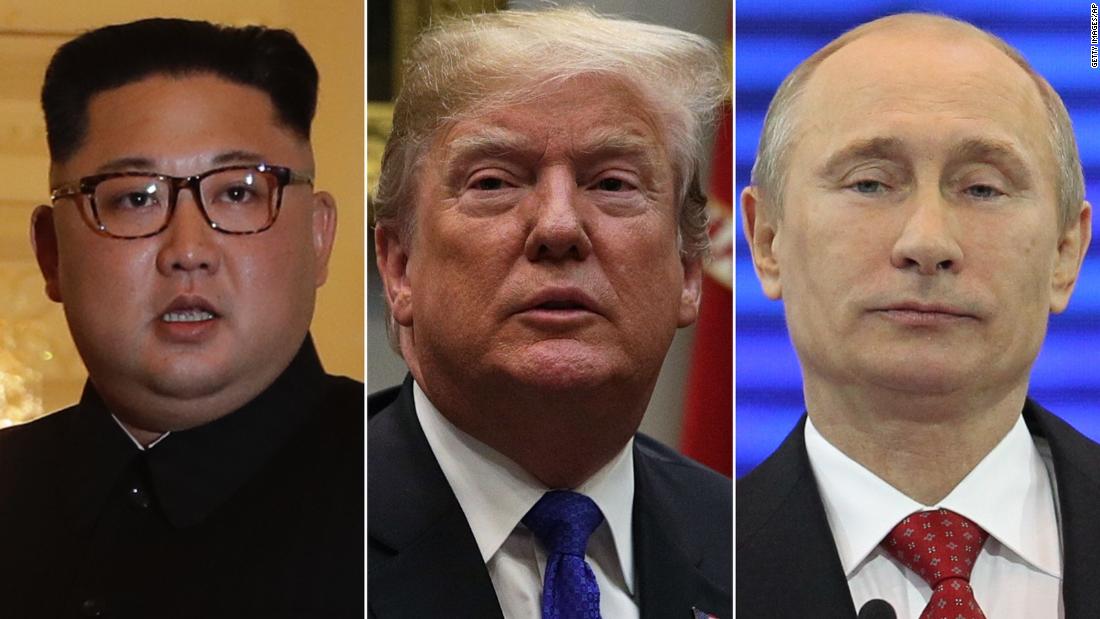[ad_1]
Stephen Biegun’s trip appears to be the latest attempt by Washington to jumpstart high-stakes nuclear talks with Pyongyang that have seemingly been stuck in neutral since the abrupt end to a summit between Kim and US President Donald Trump in Hanoi.
Trump and Kim left the Vietnamese capital without a deal in part due to disagreements over trading sanctions relief for North Korea scaling back its nuclear program.
Russia has previously echoed North Korea’s call for phased sanctions relief in exchange for denuclearization, while Trump has reportedly pushed for a big deal that gets that gets to the heart of North Korea’s nuclear program and goes beyond Pyongyang dismantling one key facility, Yongbyon.
According to CSIS, a US think tank with links to the government and defense industry, new photographs show five specialized rail cars at a part of the Yongbyon facility near an uranium enrichment facility and radiochemistry laboratory, two sites used in North Korea’s nuclear weapons program. The think tank said it obtained the photos on April 12.
Russia-North Korea summit
Neither Russia nor North Korea has announced an official meeting between their two leaders, who are not believed to have ever met each other. On Tuesday, South Korean deputy foreign affairs minister Kim In-chul said that Seoul is aware “that the summit between Russia and North Korea is being pushed forward.”
The Kremlin would not comment when asked Monday about a potential Putin-Kim meeting, which South Korean media has reported could take place around China’s Belt and Road Forum in Beijing, which is believed to begin later this month.
Chad O’Carroll, an analyst and chief executive of the Korea Risk Group, said the flight data was “unusual” but believed it was “too early to state with confidence that it’s related to anything summit-related.”
“We’ve seen non-scheduled flights take place on many times during the past year, but usually still on Mondays and Fridays — in addition to the normal ones. So this could just be due to an exceptional passenger load,” O’Carroll told CNN.
However, O’Carroll said the specific plane model being used for the Thursday flight is almost never flown on the Vladivostok to Pyongyang route, possibly indicating “it could be for government use.”
North Korea may hope for Russian support in pressuring Washington over sanctions relief, which continues to be a major sticking issue in talks between the two sides. The Trump administration has said that sanctions will only be lifted after North Korea gives up its nuclear weapons program.
Kim seemed to issue a veiled threat to the US last week during a meeting of North Korea’s rubber-stamp parliament that there could be repercussions if talks continue to stall.
He said the country needed to “deal a telling blow to the hostile forces who go with bloodshot eyes miscalculating that sanctions can bring (North Korea) to its knees,” according to state media reports.
Activity at Yongbyon?
While it has not conducted any nuclear or missile tests since talks with the US began, North Korea has never officially agreed to shut down its nuclear program. Crippling sanctions also appeared to have failed to dissuade Pyongyang from increasing its arsenal as well.
CSIS analyst Joseph Bermudez told CNN the new photos could indicate a “reprocessing campaign” is about to, or has recently, taken place. Such a move would be a key step in the production of fissile material for nuclear bombs.
“We can’t tell exactly what they’re moving. But because of their configuration, because of their deployment, it appears to be radioactive material,” he said.
South Korea’s Unification Ministry would not comment on the report.
Bermudez told CNN it’s unclear what type of radioactive material is potentially being moved. It could be radioactive waste, chemicals that have become radioactive during reprocessing, or fissile material. The North Koreans also know the world watches Yongbyon via satellite imagery, so it’s always possible the deployment of the cars could be meant for deception.
“We just don’t know,” Bermudez said.
While satellite imagery can reveal significant details about Pyongyang’s nuclear program, open-source imagery analysts and North Korea experts typically caution against drawing broad or sweeping conclusions from them without complementary intelligence.
Bermudez said it’s important to remember that “satellite imagery is only one tool in the tool box and you really need other information to take this further.”
Jenny Town, a fellow at the Stimson Center and the managing editor of 38 North, a highly respected North Korea monitoring website, shared many of the same concerns in an email to CNN.
“Even if we can see rail cars and movement, we can’t necessarily tell what’s being moved around and the North Koreans know we watch for certain things,” Town said.
“But historically, these rail cars have been associated with reprocessing campaigns. And if it is the case, then it means they’re taking the extra step toward producing weapons grade fissile material. They have not done so in a couple years.”
[ad_2]
Source link

